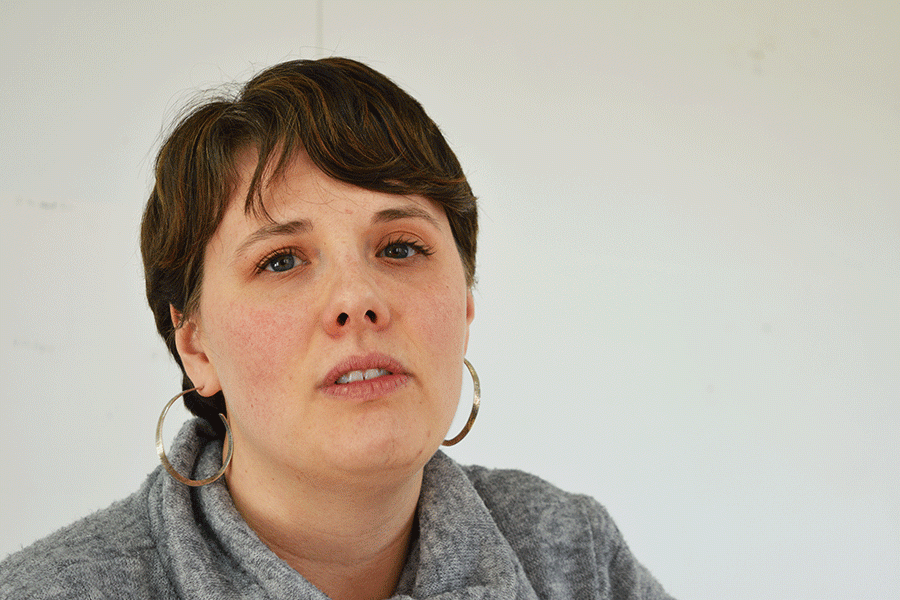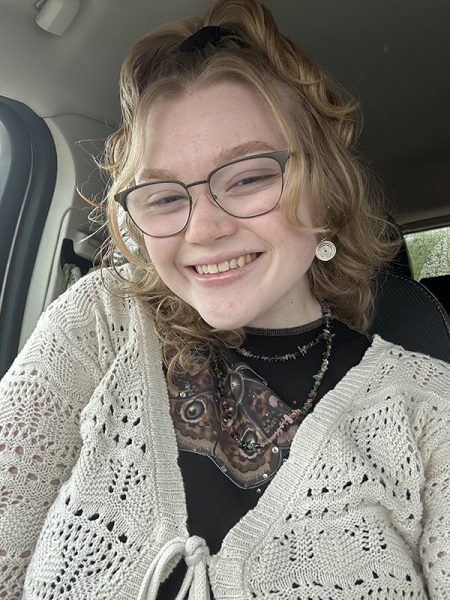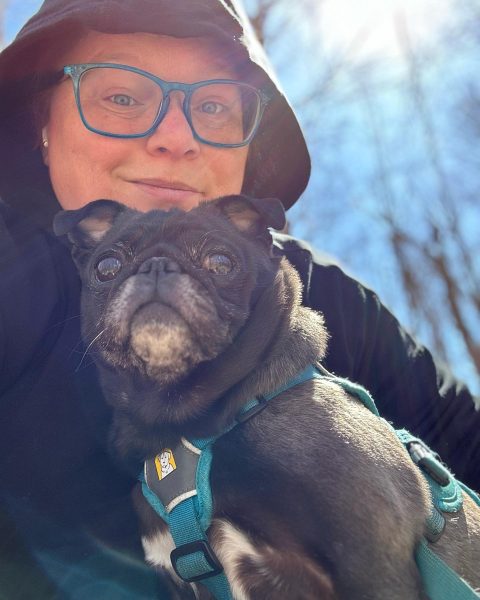Ginger Irish has had “Enough”
Tick. Tock. Tick. Tock. Two scribbly paper cut-out figures, a clothed man and a nude woman, enter the screen in jiddery-jerky stop-motion fashion. The background is fiery yellow-orange. He floats above. She sinks until only her head is visible. A little white rectangle with a penned “LESS THAN” pops suddenly on-screen.
This scene is a sampling from “The Journey,” the video portion of MFA (Master of Fine Arts) candidate Ginger Irish’s thesis exhibit, “Enough.”
“‘Enough,’ to me, means two things,” said Irish. “One is like: I am enough. I think that’s something that, as artists and as people, we often face. Am I enough? Am I good enough? Am I doing the right thing in my life? The other part of it is like: I’ve had enough. One of the themes I work with is sexism and feminism and gender politics. ‘I’ve had enough of this situation.’ That’s the dual meaning of the title.”
Irish is a native Vermonter, native enough to be raised on Shelburne’s Irish Hill Road, which is named after her family.
While Irish grew up drawing and painting, for a long time she didn’t make artwork a special focus of her academic life. She took a single class at Champlain Valley Union high school, but as an undergraduate at Smith College her studies were centered on sociology.
She never regretted that decision because, according to her, it provided her with subject matter which now informs her work.
“I’m interested in humanity,” said Irish, “like studying sociology, thinking about structures in society, theories and how things work. What kind of pressures are on people and what kind of opportunities are there. It really fits and it makes me, in a way, really grateful that I didn’t study art as an undergraduate, that I waited until later in my life to reapproach art when I had [already] explored some other ideas that I wanted to make work about.”
One of the major themes in “Enough” is adversity. Irish has herself faced special adversity in creating this exhibit, though in a physical form. “A year ago I was diagnosed with bilateral de Quervain’s syndrome, which is tendonitis of the thumbs,” said Irish. “I had to figure out a new way to do my artwork without using my hands, essentially. I didn’t notice [how much we use our thumbs] until I had this problem. Really anything you’re doing, you’re using your thumbs. Whether it’s picking up a piece of paper or brushing your teeth or tying your shoes.”
But that didn’t stop her. Endowed with a tenacious and creative mind, Irish soon began turning misfortune into opportunity.
“I did some experimentation. I did a project where I recorded every time I used my thumbs. I would say the time and the place and what I was doing. Then I collected a series of objects, things like doorknobs and toothbrushes and dishes and shoelaces and I would mark them with red paint wherever I touched them with my thumbs and installed it on the wall,” said Irish.
“I also tried narrating a series of drawings,” she continued. “My mom came to my studio and she sat at the desk and I sat behind her so I couldn’t see what she was doing, and I recorded myself describing a drawing. I said, ‘draw this. Draw a tree. There’s lightning. The ground is hilly,’ whatever I described. I took the recording and gave it to three other women in my family. My sister, my aunt, and my cousin. They each listened to the recordings of this series of four or five drawings and they drew it. I laid them out so you could see how the different women in my family interpreted an idea that came from me, but wasn’t done by my hand because I couldn’t do it with my hand.”
“That was kind of successful,” she said. “They were both interesting projects, but not really what I wanted to do. So then I set up my camera and I was like, ‘you know what, I’m just going to try something new.’ For years I’ve been painting and drawing empty barren landscape shapes and then [also] making all these figures and cutting them out. Those two pieces of work never really came together, but what I did was pin on the wall one of the landscapes and a couple of the figures and just [began] taking pictures and moving them together.”
And just like that, the idea which would become her Master’s thesis was born.
In its completed form, her exhibit was composed of four main parts. Along one wall of the gallery over a hundred different hand-drawn figures were nailed into the wall. Some were accompanied with text, like the little girl with “stop being perfect” jotted above her head. Another wall, perpendicular, featured background scenes produced with colored pencils and watercolor paint. A stand in the center of the room displayed glazed paper mache pottery. Last, but certainly not least, was a third wall brightly lit with the projected image of “The Journey.”
“My original idea,” said Irish, “was that I was going to put just the animation and not have anything else in the show. Then I had a couple of critiques and was talking to some people about it and got the feedback that people would be really interested to see the characters. Once it’s projected on the wall at eight feet by four feet, nobody knows that the character was actually [very small].”
With her time at JSC nearing completion, Irish is now making plans to continue showing her work elsewhere. “I hope to submit my work, maybe to some film festivals or animation festivals. See if there are group shows or opportunities to show my work more because honestly I got really great feedback from the people who saw it. I think a lot of people were really interested in what I was doing and felt connected to it and felt like it was authentic.”
Earning her MFA has been a tiresome and, at times, difficult process. Ultimately, however, it has been even more rewarding. “It’s a great sense of accomplishment,” said Irish. “It’s not, ‘oh I’m so glad I’m done.’ When I finished undergrad, that’s how I felt. ‘Oh my god, I’m so glad I’m done. I wish school had been a whole year shorter.’ That’s not how I feel. I just feel like it was the right amount of time and that I ended in a really good place.
For more information about Irish and other artists, visit: https://shelburnepondstudios.wordpress.com/






